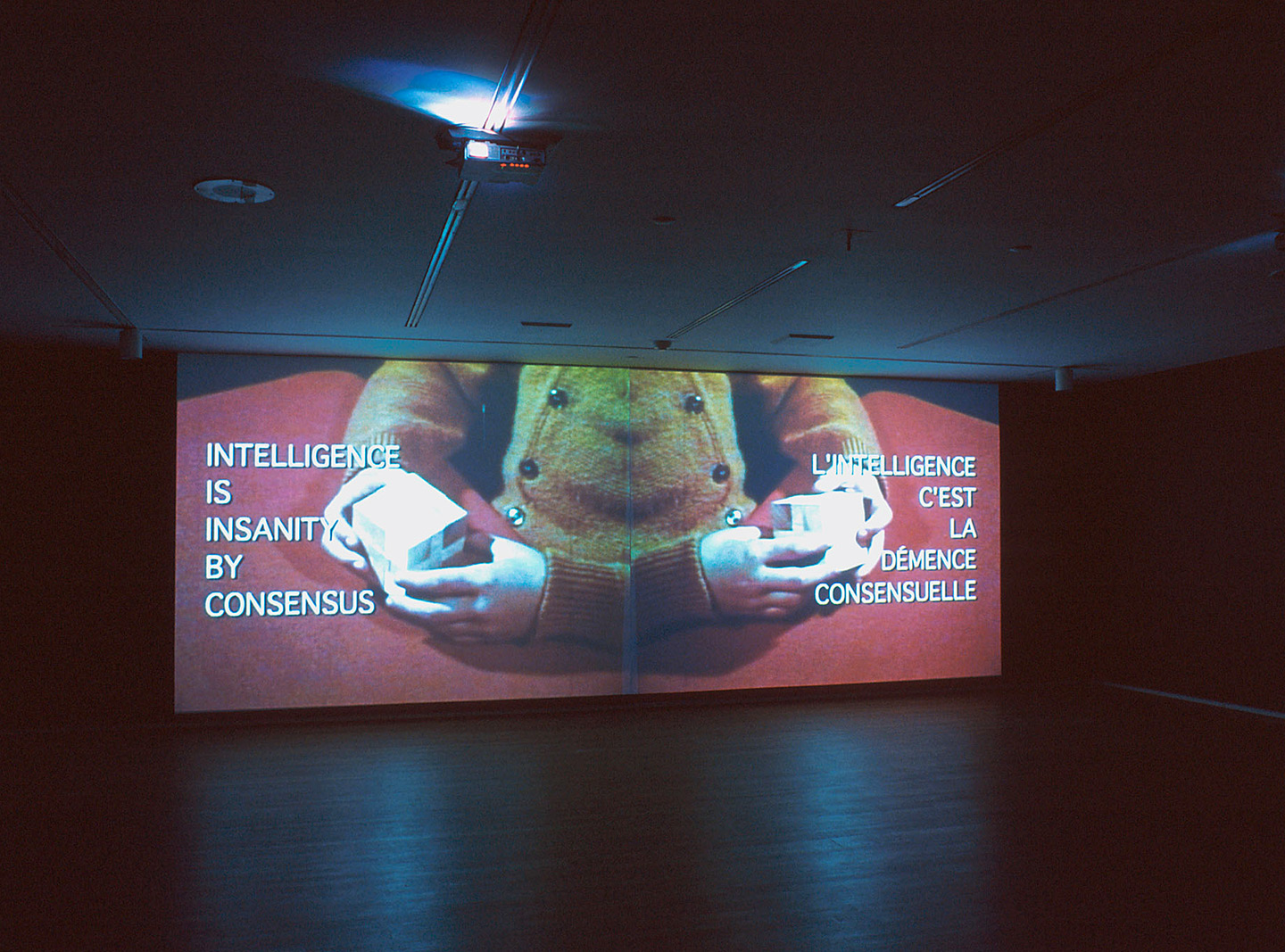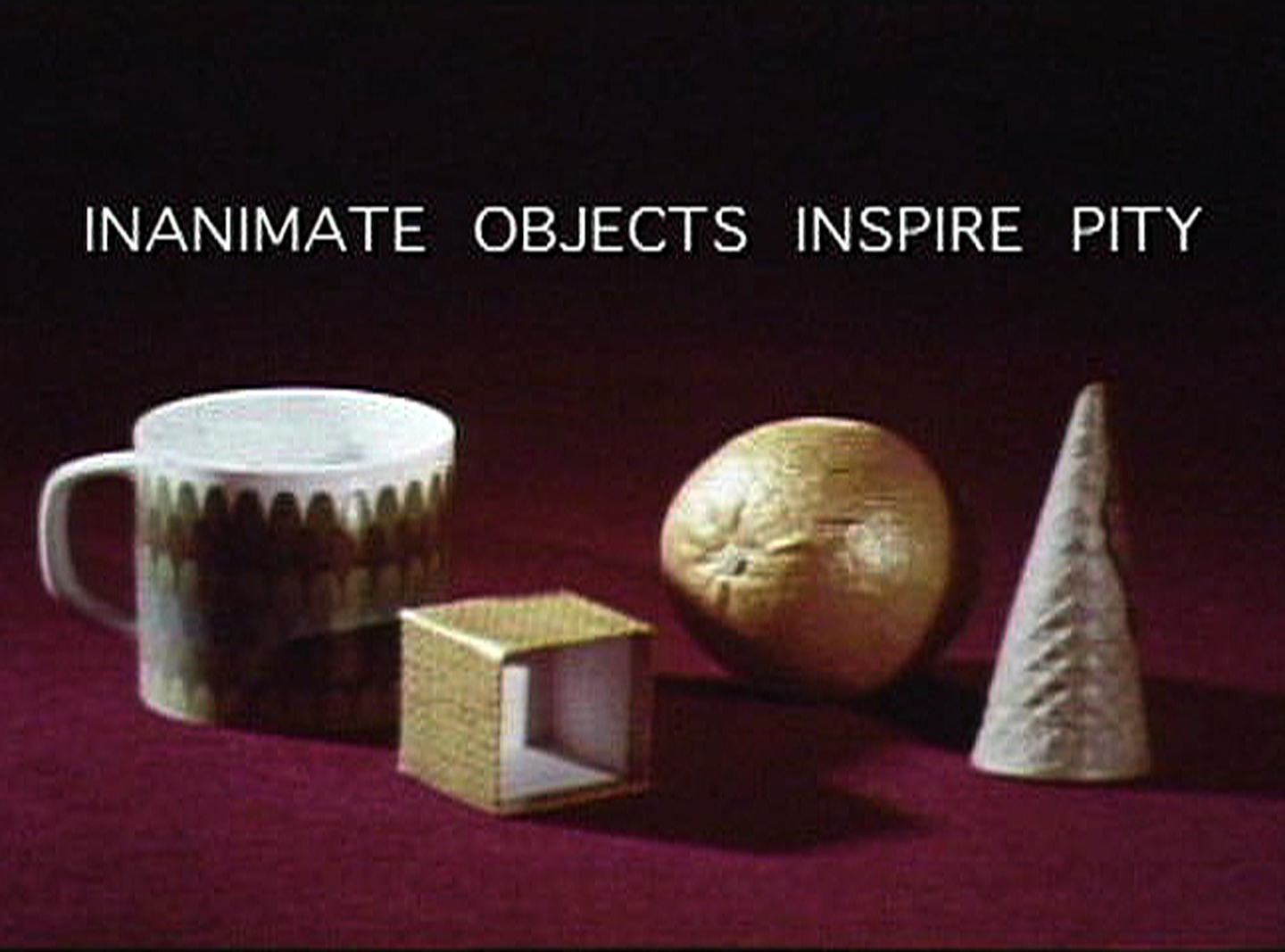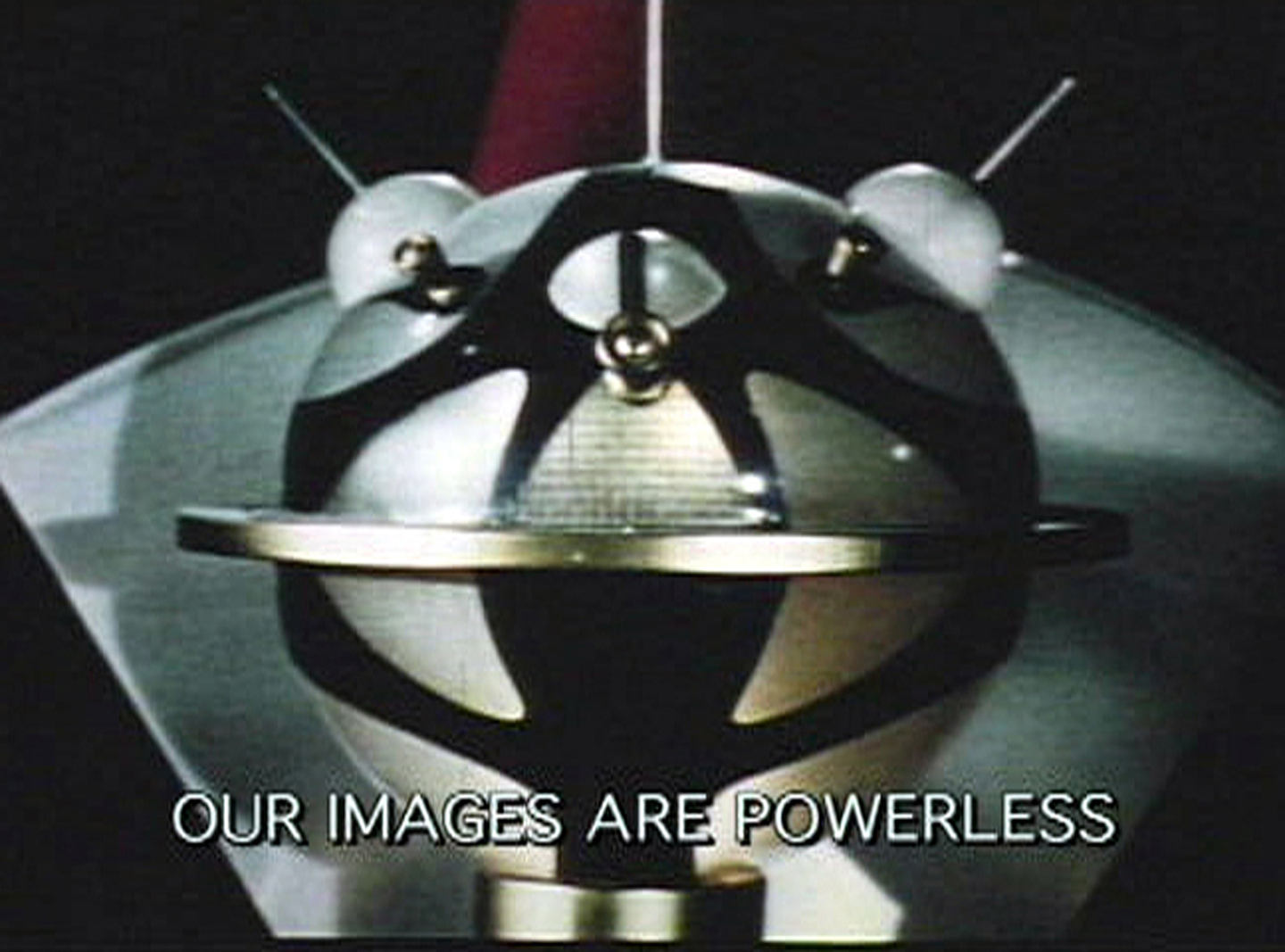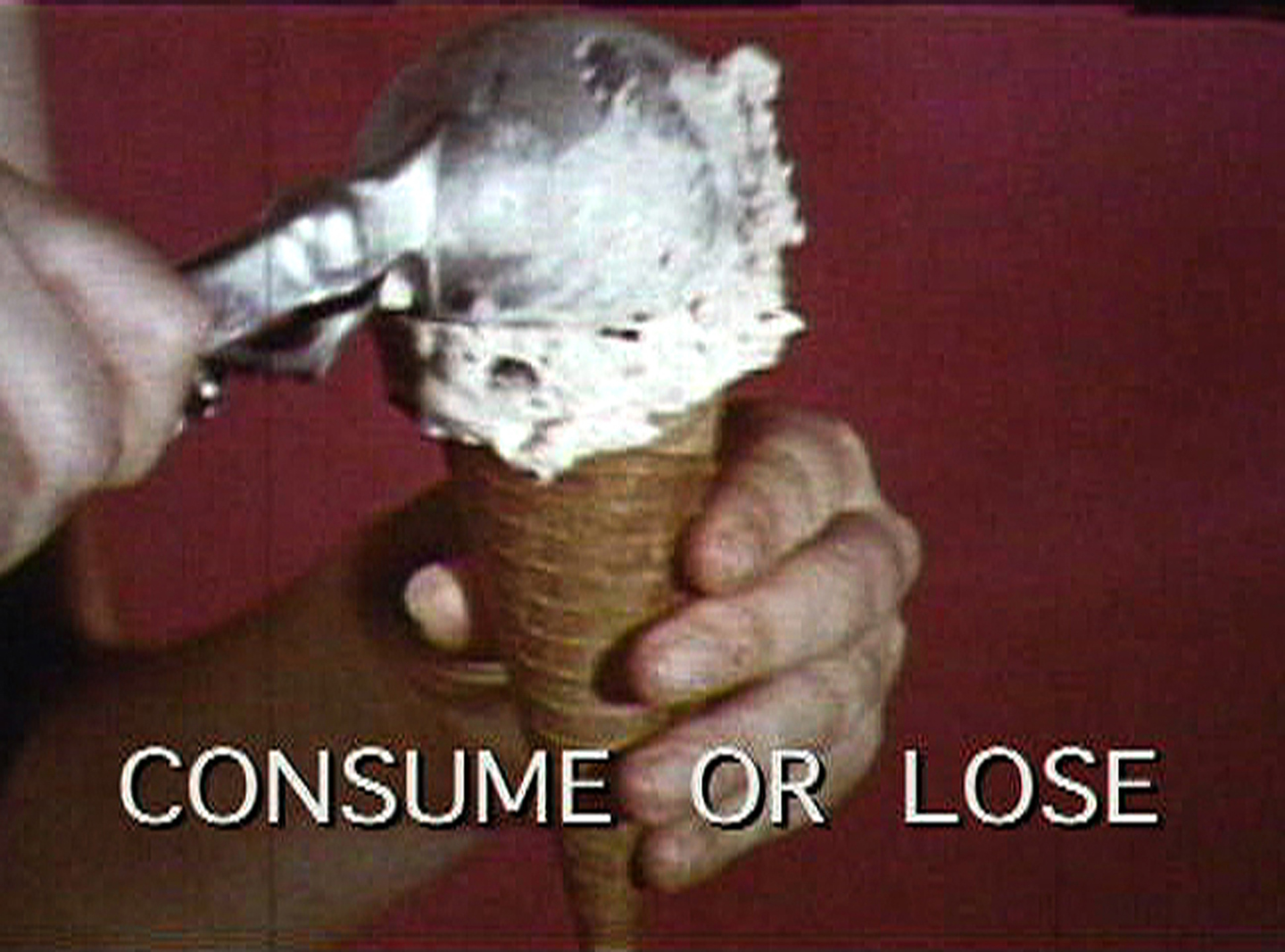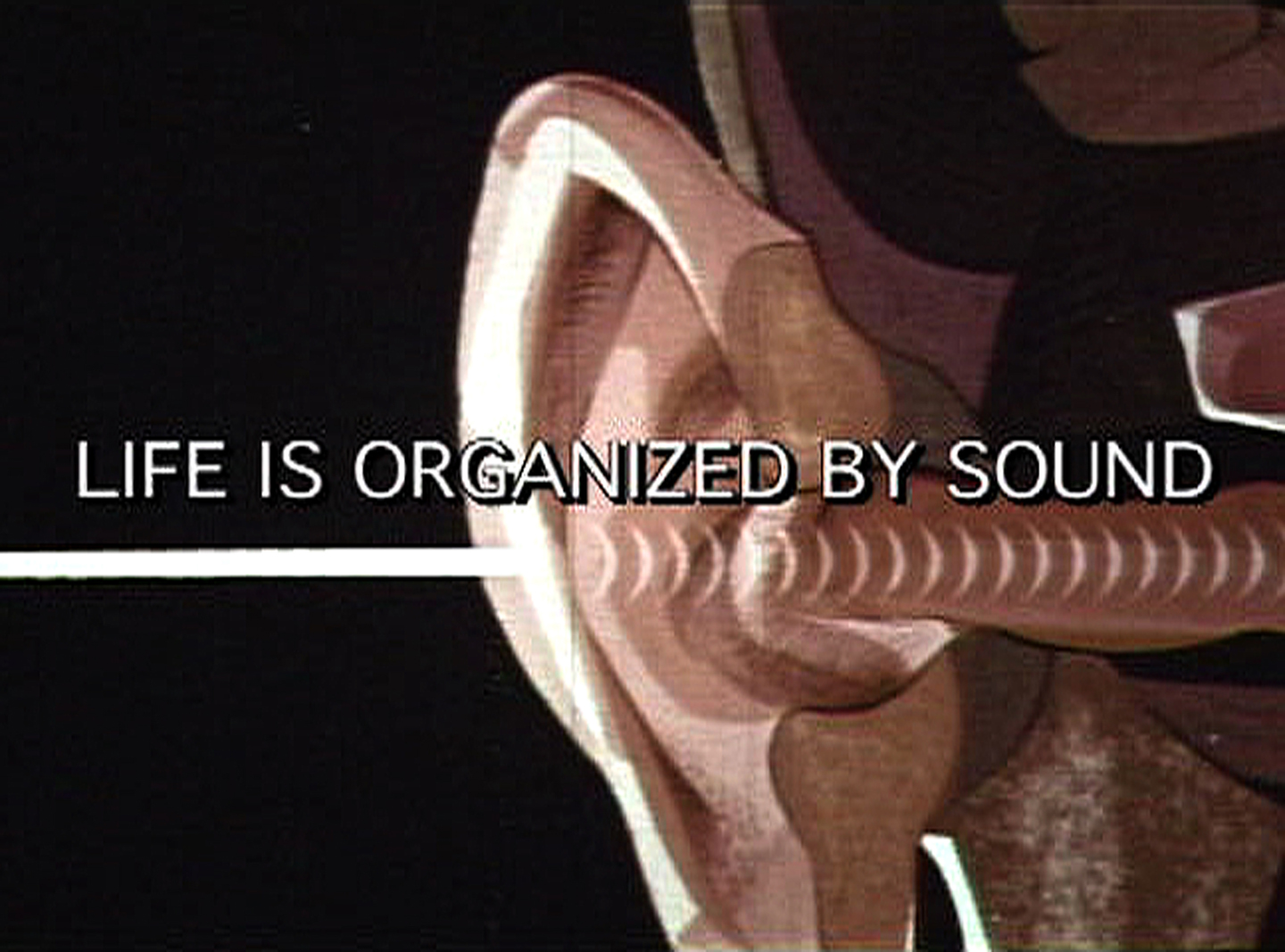SATELLITE
Video installation, 10:00
Single channel version, 5:30
Dimensions variable, 2004
“Rhythmic techno in the background. Stereovision zoom-in to an ear in living flesh and colour. Then the first line of commentary, voice over. “The human ear. Externally a flap of skin and cartilage. A gatherer of energy. A gatherer of sound waves.” The voice is that of the narrator of an old-fashioned documentary, Hearing and the Ears. It is neutral and authoritative, like the idea of science so widely held not long ago. It evokes the faith of old in objective explanations of reality.
“There follow, to a rhythmic beat, other images, also taken from dated archival films and scientific documentaries that show the Earth turning, animated diagrams of the human body, a data control room, a medical laboratory, a “rave-up”, an so on. Over this visual storyline appear sayings, also in stereo, English on the left French on the right: Revolutions per Minute, Beats per Minute, Master Bypass, Cut A Run, Carpet Bomb, Boom-chicka-boom, Modern Love, Disco Box, Drunk Tank, Champagne Swamp… Images and words combine in a complex logic, sometimes literal, often surrealist, even insane.
“Satellite, by Nelson Henricks, is a parable about understanding, an aesthetic dissertation on the way human beings incorporate reality through the sense organs of hearing and sight. Even in its double screen format, symbolizing the two lobes of the brain, our two eyes, our two ears, the installation mimes the operation of intelligence, moving with its rhythm, throbbing to the pulsation of the heart and nerves. The work imitates its connective springs, systematic and infinite, the whole mechanism of associations by which the brain imposes the dictatorship of meaning, a religion of sorts, which must be subverted from time to time. To quote an aphorism in Satellite: “It’s as hard to be stupid as it is to be smart”.
“The future is an outdated invention. Times once heroic have become obscured. The scientific paradigm underlying the development of our culture came up against those limits, those of the absurd and “the other”. The brain, that machine for making sense of things, is challenged on its own ground. The heart and the sex instinct demand their share of dominion. We must come to terms with non-sense, a productive non-sense according to Nelson Henricks. “We will teach you how to read”, he writes – the wrong way round – in Satellite.” (Stéphane Aquin)
